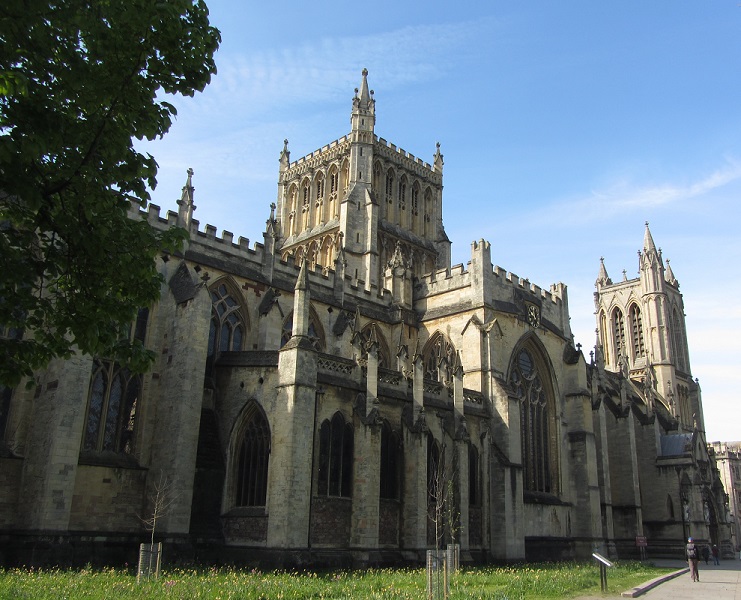
Bristol
Cathedral was formerly the
Abbey of St Augustine, founded in 1140 by Robert Fitzharding, a wealthy merchant who became
the first
Lord Berkeley. The Chapter House was built in 1165 and remains one of the finest examples of Norman architecture in the
country. In 1298 Abbot Knowle initiated the rebuilding of the Abbey, creating a new aisled choir, an
Eastern Lady Chapel and the
Berkeley Chapel. Sir Nikolaus Pevsner described this 14th century work as "superior to
anything else built in England and indeed
Europe at the same time". The choir aisles are the same height as the
choir itself, making Bristol the only 'hall church' in England,
while the 50ft high columns support the tallest
single arches in the country. It is said that the design of the choir was so original that it
became the model of the
hall church in Europe. In 1539 the Abbey was dissolved and the incomplete nave demolished. In 1542 Bristol
became
one of six new dioceses created by King Henry VIII and the surviving eastern end of the Abbey became
Bristol Cathedral.